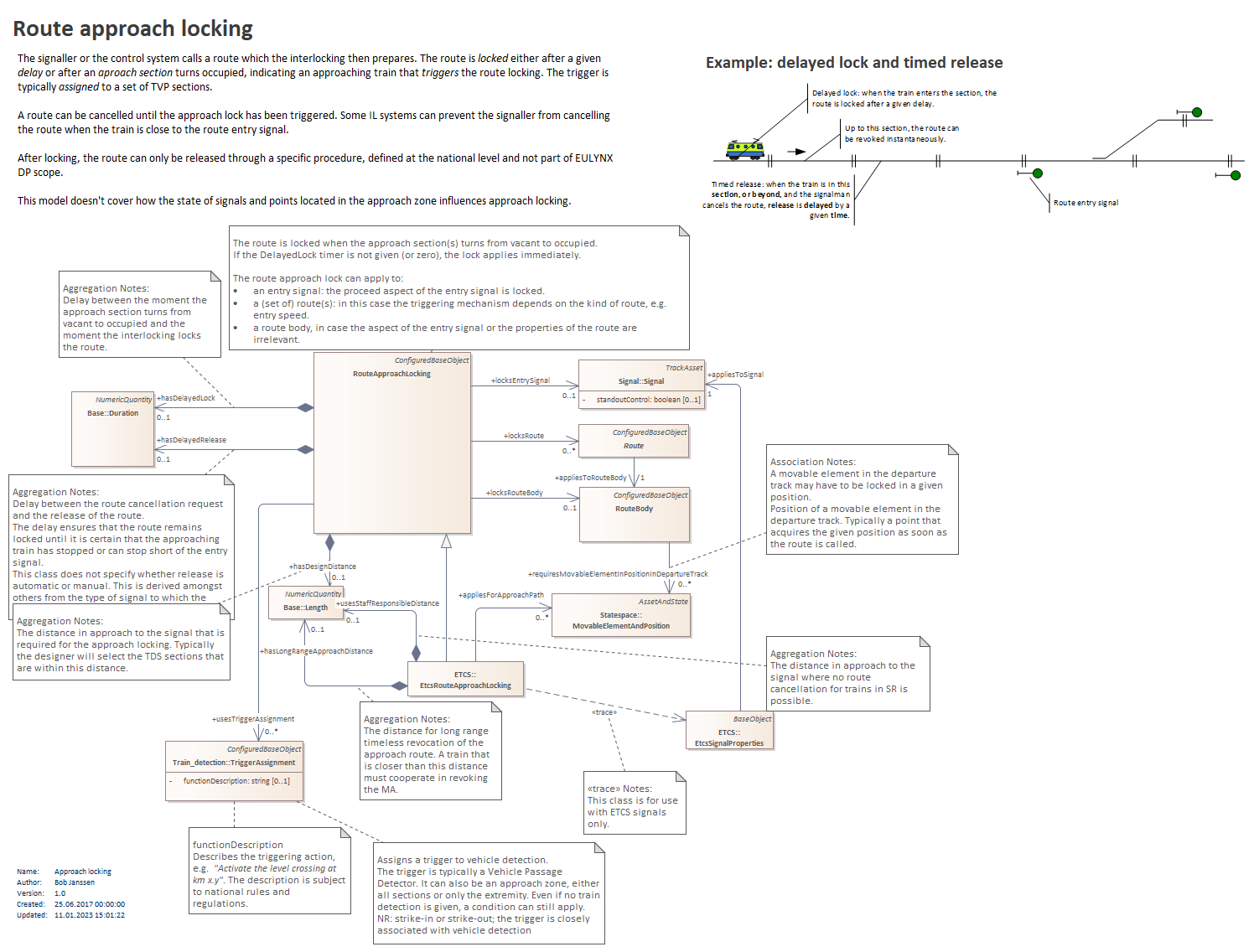DISCLAIMER:
This diagram and its contents are part of version 1.2 (0.A) of the EULYNX Data Preparation model that is released under EUPL 1.2.
The model will continue to evolve as national requirements are incorporated.
This diagram and its contents are part of version 1.2 (0.A) of the EULYNX Data Preparation model that is released under EUPL 1.2.
The model will continue to evolve as national requirements are incorporated.

Approach locking : Class diagram
| Created: | 25.06.2017 00:00:00 |
| Modified: | 11.01.2023 15:01:22 |
 Project: Project: |
|
 Advanced: Advanced: |
The signalman or control system calls a route which the interlocking then prepares. The route is <i>locked</i> either after a given <i>delay </i>but more generally after an <i>aproach section </i>turns occupied. This indicates an approaching train that <i>triggers </i>the route locking. The trigger is typically <i>assigned </i>to a set of TVP sections.<br/><br/>The route approach lock can apply to <br/><ul>
<li>an entry signal, thus locking the proceed aspect of the entry signal</li><li>a (set of) route(s) so that the triggering mechanisms depends on the kind of route, e.g. entry speed</li><li>a route body in case the aspect or other qualities of the route are irrelevant</li></ul>
<br/>A route can be cancelled until the approach lock has been triggered. After that, the route can only be released given a specific procedure.<br/>When the train is close to the route entry signal, some systems can prevent the signalman from cancelling the route.<br/>There can be points and signals in the approach zone. This model doesn't cover how the state of signals and points influences approach locking. <br/><br/><br/>
<li>an entry signal, thus locking the proceed aspect of the entry signal</li><li>a (set of) route(s) so that the triggering mechanisms depends on the kind of route, e.g. entry speed</li><li>a route body in case the aspect or other qualities of the route are irrelevant</li></ul>
<br/>A route can be cancelled until the approach lock has been triggered. After that, the route can only be released given a specific procedure.<br/>When the train is close to the route entry signal, some systems can prevent the signalman from cancelling the route.<br/>There can be points and signals in the approach zone. This model doesn't cover how the state of signals and points influences approach locking. <br/><br/><br/>